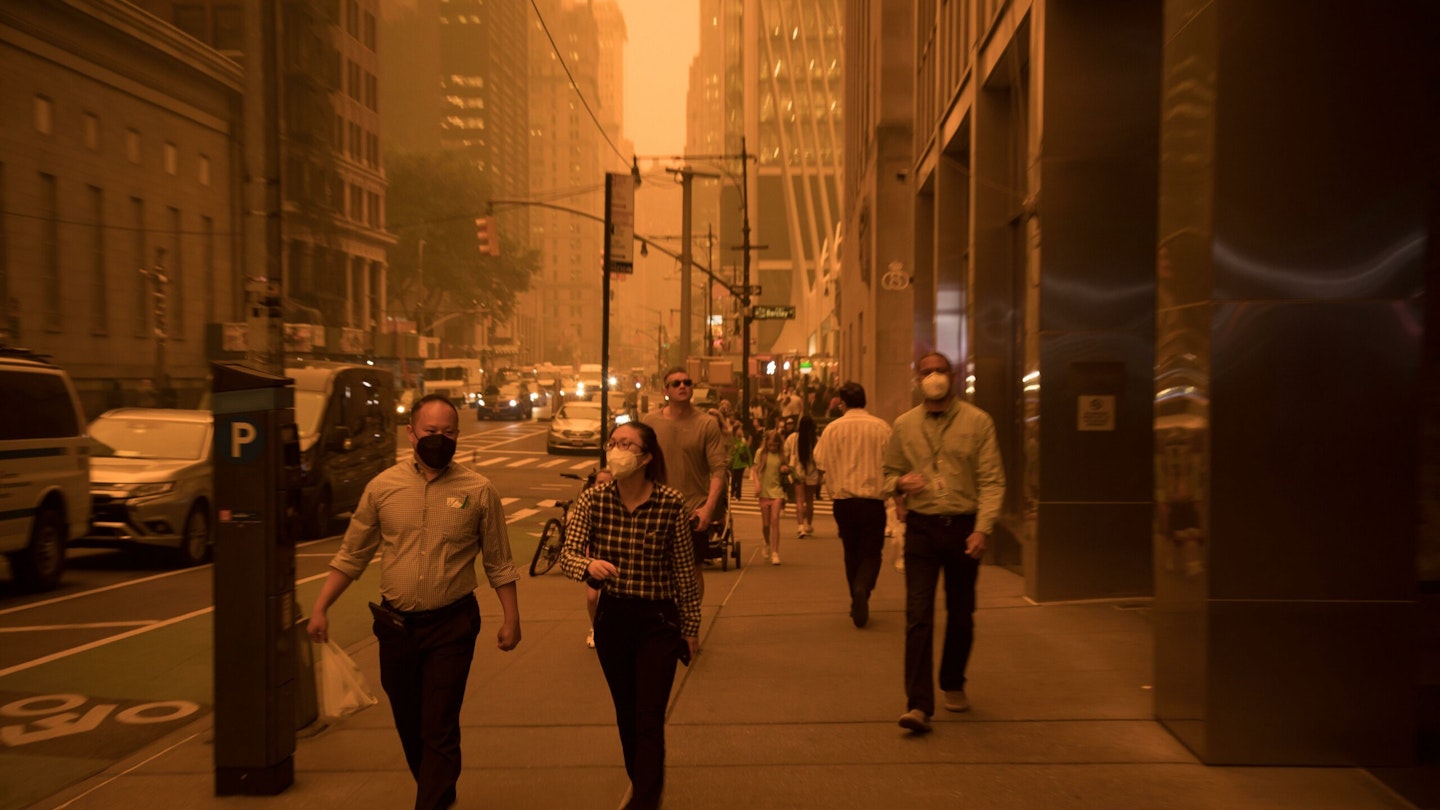Mother Nature sent us some serious postcards from the apocalypse this year – and, realistically, we should have known they were in the post. According to data from NASA, this year’s carbon dioxide levels were at their highest for more than two million years. To put that into perspective, the last time the atmosphere contained that much CO2, trees grew at the South Pole.
What does this environmental damage look like for us? For one, a dystopian New York skyline as tangerine-tastic as Donald Trump’s face. Who can forget that June day when the Big Apple’s skyscrapers were shrouded in a toxic haze thanks to the devastating wildfires that affected every Canadian province. Or this summer, when the Mediterranean, especially Greece, was devoured by fire, causing thousands to flee. Then came flooding in Libya and Hong Kong, and droughts from South Korea to Zambia.
This year’s extreme weather exposed the way we are living in the past. From the way we buzz about in fossil-fuelled cars to how we grow food, we’re still acting as though the atmosphere is calm and stable. Meanwhile, the deadly wildfires in Maui would seem to illustrate the new reality on an
Earth that reached its hottest global average temperatures ever between June and August. We need to adapt quickly and minimise the chaos by cutting emissions right now.
And yet, instead, this year Rishi Sunak U-turned on a number of ‘net zero’ (cutting emissions) targets and gave the green light to the development of the huge Rosebank oil field. Campaigners say this will send UK emissions soaring. It’s no wonder, then, that warnings from climate agencies such as the UN sound panicked. One UN report pleaded this year, ‘If we act now, we can still secure a liveable, sustainable future for all.’
For the climate optimists out there, like me, there are signs of change. The technology transition from fossil fuel to renewables looked unstoppable this year, including in the UK. In October, the largest ever wind turbine installed in European waters, the Haliade-X, off the coast of the UK, began generating power – 260 metres tall with blades as long as a football field, each turbine can power 16,000 homes. Plus there was a win for veggies as household meat consumption fell by 14%. Let’s hope 2024 brings more change.
